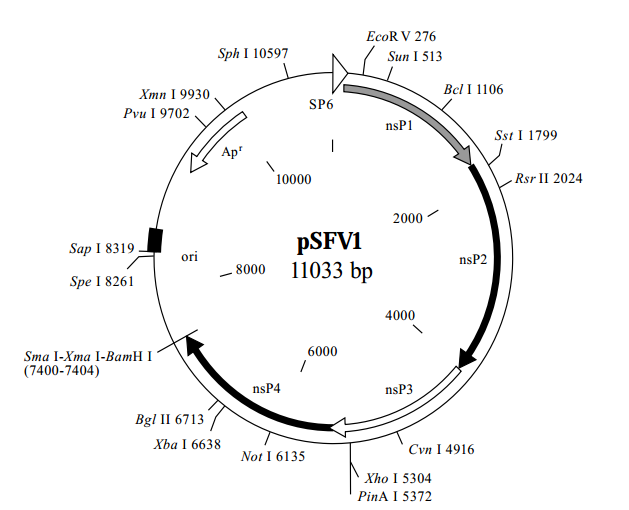pSFV1 载体
The pSFV1 Eukaryotic Expression Vector is a novel DNA expression system based on the Semliki Forest Virus (SFV) replicon which has a broad host range and a high level of expression efficiency (1). In contrast to other protein expression systems, the SFV expression system has several advantages, including direct cloning into the vector and proper glycosylation of the recombinant protein. The SFV expression system is easy to use. The DNA of interest is cloned into the pSFV1 plasmid vector that serves as a template for in vitro synthesis of recombinant RNA, and the RNA is then transfected into tissue culture cells with DMRIE-C Reagent, Lipofectin® Reagent or by electroporation. The recombinant RNA in the cell drives its own replication and capping, resulting in production of large amounts of heterologous protein while inhibiting host protein synthesis. High transfection efficiencies and expression of heterologous proteins have been achieved by transfection of pSFV1 in vitro transcribed RNA into CHO-K1 and BHK-21 cells (2). The plasmid pSFV3- lacZ contains the E. coli #-galactosidase gene, lacZ, and is included as a control plasmid to optimize transfection conditions.


